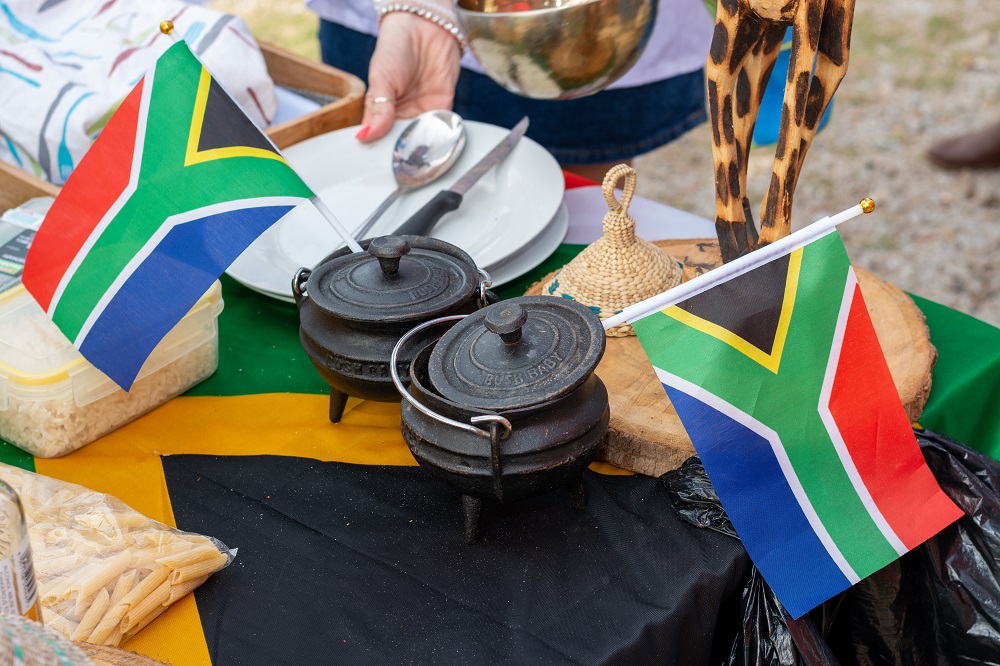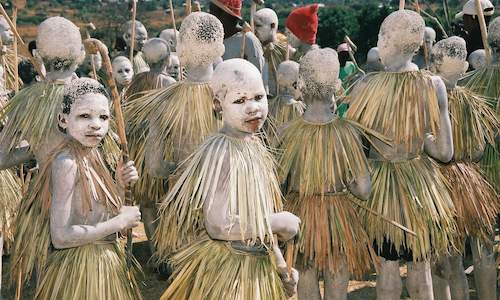South African Culture Today Things To Know Before You Get This
South African Culture Today Things To Know Before You Get This
Blog Article
Get This Report on South African Culture Today
Table of ContentsSouth African Culture Today for Beginners9 Easy Facts About South African Culture Today ShownThe smart Trick of South African Culture Today That Nobody is Talking AboutThe 7-Second Trick For South African Culture TodayAn Unbiased View of South African Culture TodayA Biased View of South African Culture Today
An issue of relevance in Zambian towns is the passing away of loved ones. All members of the village put cash, time and initiative with each other for the burial of the deceased.During the grieving duration; males remain outside the house and the women stay inside the residence of the deceased. After discussing the dead, the village strolls to the location of funeral to claim their last goodbyes. Songs and dancing is an extremely essential facet of the Zambian society. The numerous tribal devices have their very own dancing kinds; nonetheless, makishi is common amongst all people.
Fascination About South African Culture Today
When it involves music, drums are made use of the most, with a selection of drumming ceremonies. In Zambia, bulk of the people are Christian; Protestant and Roman Catholic. There are little teams of Muslims and Hindus, with the remainder adhering to neighborhood indigenous tribal ideas.

South African heritage and culture is profoundly diverse, and is composed of various teams of individuals that each have their very own practices and ideas. Having such a variety of individuals and societies is what makes South Africa so one-of-a-kind. In the true sense of the phrase, we are a rainbow nation.
South Africa has roughly three hundred thousand Portuguese people living in it. Making it the 7th on the list of countries with one of the most Portuguese individuals in it beyond Portugal. Portuguese is not just a culture, however it is also a language and a nationality. Portuguese people stem from the nation of Portugal in Europe, nevertheless, because of Portugal (like numerous other nations in Europe) discovering the globe and dominating other nations throughout the 15th 20th centuries, South Africa has what we call Portuguese South African's living in it.
A Biased View of South African Culture Today
Among the prominent functions of the topography is a plateau that covers almost two thirds of the facility of the country. The plateau facility rises towards the southeast, where it culminates in the Drakensberg variety, component of an escarpment that separates the plateau from the seaside areas. The Drakensburg includes Sparkling wine Castle, the highest optimal in the country.
The region north of the Witwatersrand, called the bushveld, inclines downward from eastern to west toward the Limpopo River, which develops the global border. The western section of the plateau, the middleveld, additionally descends towards the west and differs in altitude between the highveld and bushveld. In between the Drakensburg and the eastern and southerly coastline, the land descends to the sea.
Nearer the shore there is a low-lying level called the eastern lowveld. Southwest of the plateau the country ends up being considerably extra arid, paving the way to the hostile desert of the Great Karroo, approached the east by the lower, much better sprinkled plateau of the Little Karroo. Dividing the dry southern interior from the sandy littoral of the southern coastline and West Cape is an additional array, the Langeberg.
Unknown Facts About South African Culture Today
The country's racially, ethnically, and politically split background has created national and subnational symbols that still function as icons of the nation, and others signs that are accepted only by certain teams. The monoliths to white inhabitant conquest and political supremacy, such as the Afrikaner Voortrekker ("pioneer") Monument in Pretoria and the Rhodes Monolith recognizing the British colonial empire contractor and Cape prime minister Cecil Rhodes, remain sectarian icons.
The initial modern-day occupants were the San ("bushman") hunter-gatherers and the Khoi ("Hottentot") peoples, that rounded up livestock (South African culture today). The San may have existed for hundreds of years and left evidence of their presence in hundreds of old cave paints ("rock art"). Bantu-speaking clans that were the forefathers of the Nguni (today's amaZulu, amaXhosa, amaSwazi, and vaTsonga peoples) and Tswana-Sotho language teams (today's Batswana and Southern and Northern Basotho) moved down from eastern Africa as very early as the fifteenth century

Both former republics of the Orange Free State and Transvaal (South African Republic) were developed by Afrikaner settlers who beat and dispossessed the Basotho and Batswana. Lesotho would certainly have been forcibly integrated right into the Orange Free State without the extension of British security in 1869. The utmost unification of the country arised from the South African Battle (18991902) between the British and the two Afrikaner republics, which lowered the country to mess up at the start of the twentieth century.
Afrikaners traditionally considered themselves the only true South Africans and, while approving complete citizenship to all locals of European descent, rejected that standing to individuals of shade till the autonomous transition of 1994. British South Africans maintain a feeling go to this site of cultural and social link to Great Britain without deteriorating their identification as South Africans.
Not known Details About South African Culture Today
The diversity and fragmentation within ethnic collections and the balance of tensions in between those teams throughout the twentieth century stopped interethnic civil dispute. While intergroup tensions over resources, entitlements, and political dominance continue to be, those problems are as most likely to pit Zulu against Zulu as Zulu versus Xhosa or African versus Afrikaner.
From colonial India, British vendors and administrators brought the curved steel decorative roofing systems and slender lace job pillars that still symbolize the terraces of cottages in communities and cities throughout the country. Holy places add a crucial architectural aspect also in the tiniest towns. Along with the rising steeples and traditional stonework of Afrikaans Dutch Reformed churches, Anglican churches, synagogues, mosques, and Hindu shrines give range to the religious architectural scene.

Slaughtering and the developing of typical grain beer are crucial in protecting the participation and goodwill of the forefathers that are considered the guardians of great ton of money, success, and well-being. Indian learn the facts here now neighborhoods keep their native culinary customs and use them on Islamic and Hindu routine and ritualistic occasions. Afrikaners find more and Coloured people gather at weekends and unique celebrations at multifamily bbqs called braais, where community bonds are strengthened.
Since this was the main financial venture of both black Africans and white homesteaders, conflict between those groups centered on the belongings of grazing land and livestock. In 1867, the largest ruby down payments worldwide were uncovered at Kimberley in the west main location. The wide range from those areas aided fund the exploitation of the best gold coral reef in the globe, which was uncovered on the Witwatersrand in 1886.
The Only Guide to South African Culture Today
This brought about misconceptions and intentional misrepresentation in the transactions of white inhabitants and government officials with African principals throughout the early american duration (South African culture today). In the facility of African books, some aspects of communal and primarily "tribal trust fund" land tenure were preserved, and also in white country areas, kinds of public period were still practiced in locations with African neighborhoods
After the democratic makeover of 1994, programs for land restitution, redistribution, and reform were set up, but progression has been slow-moving. The white minority still manages eighty percent of the land. In the wake of farming land invasions in Zimbabwe, the Division of Land Affairs has actually pledged to speed up land redistribution.
Report this page